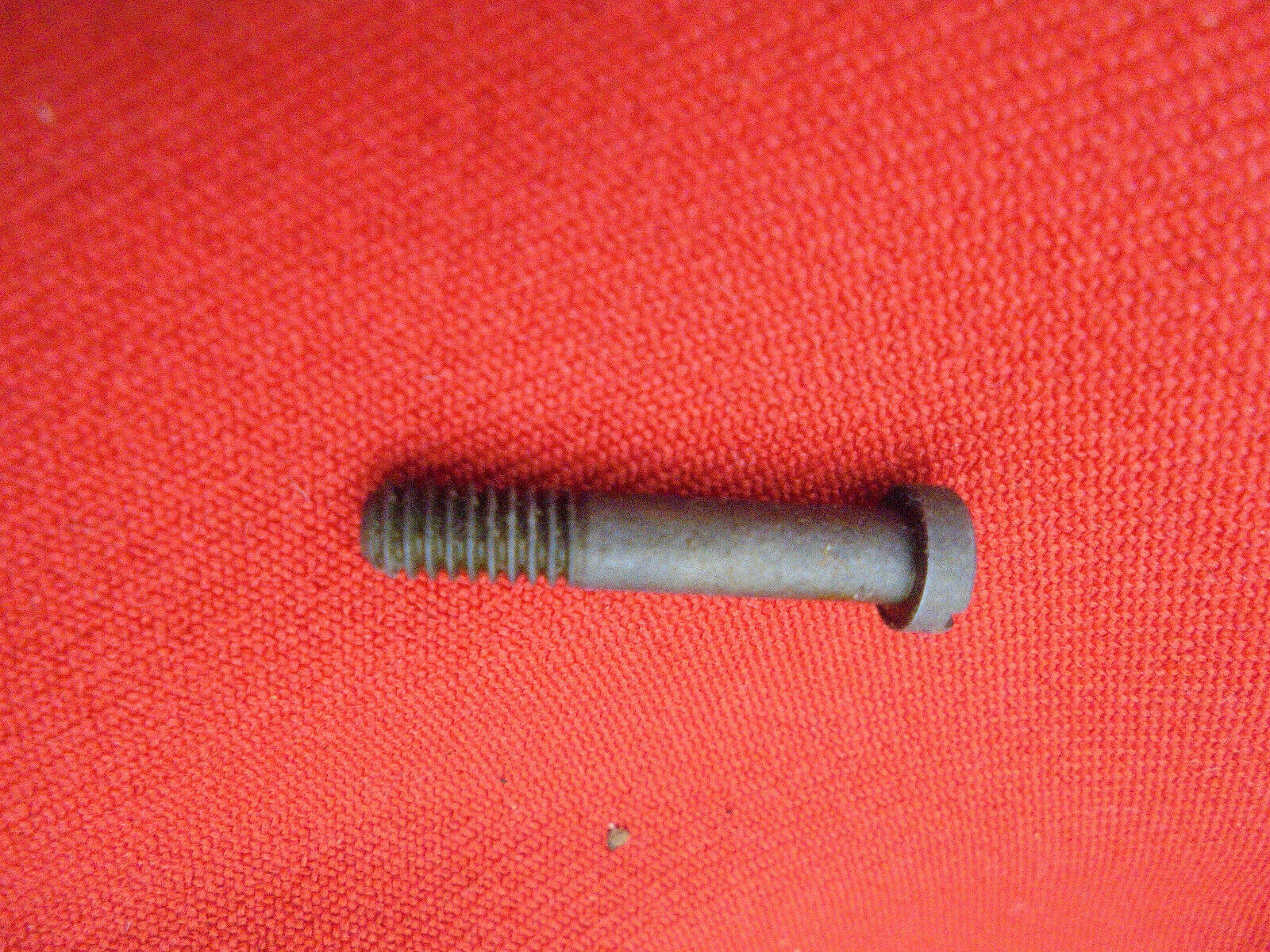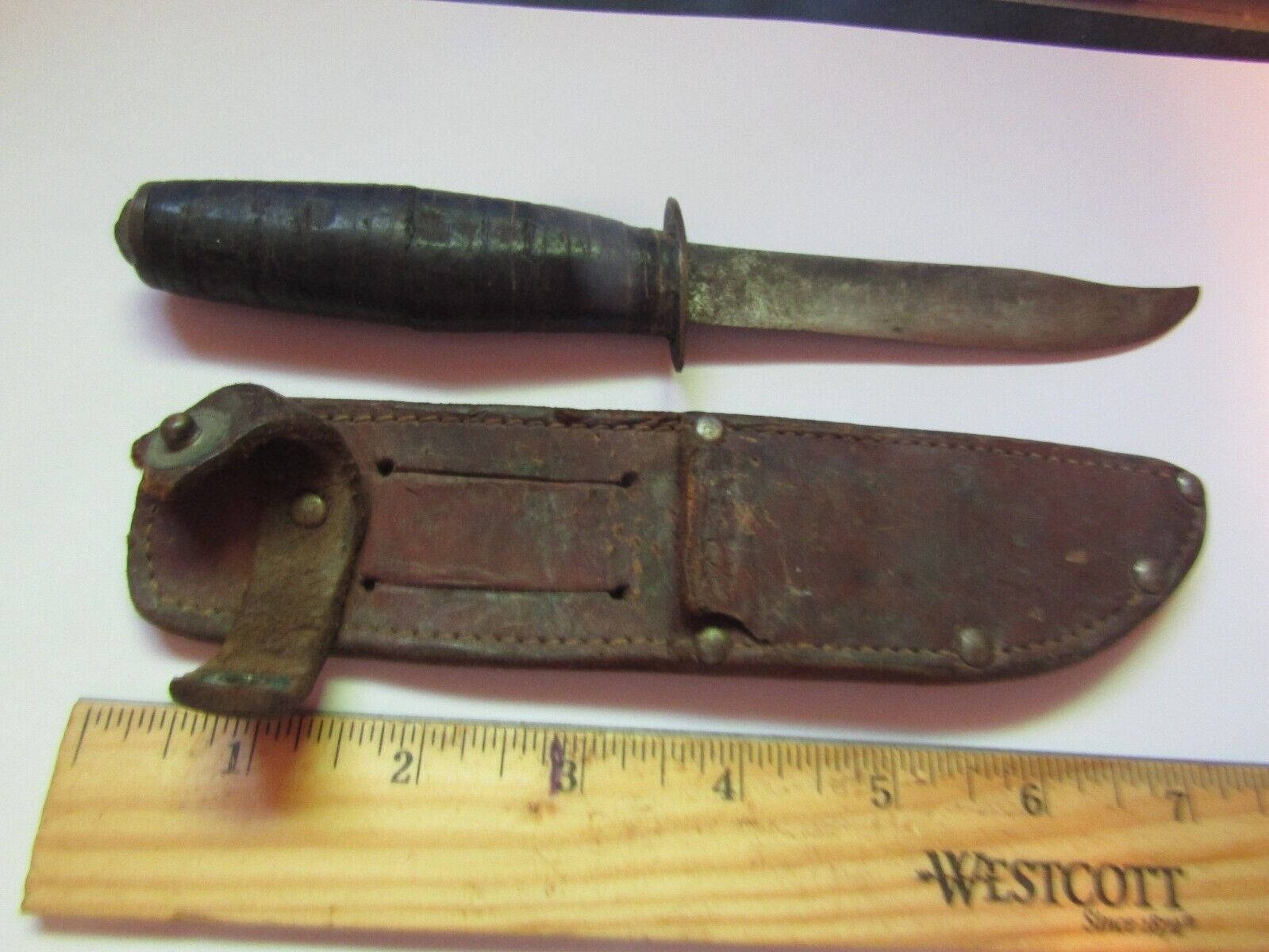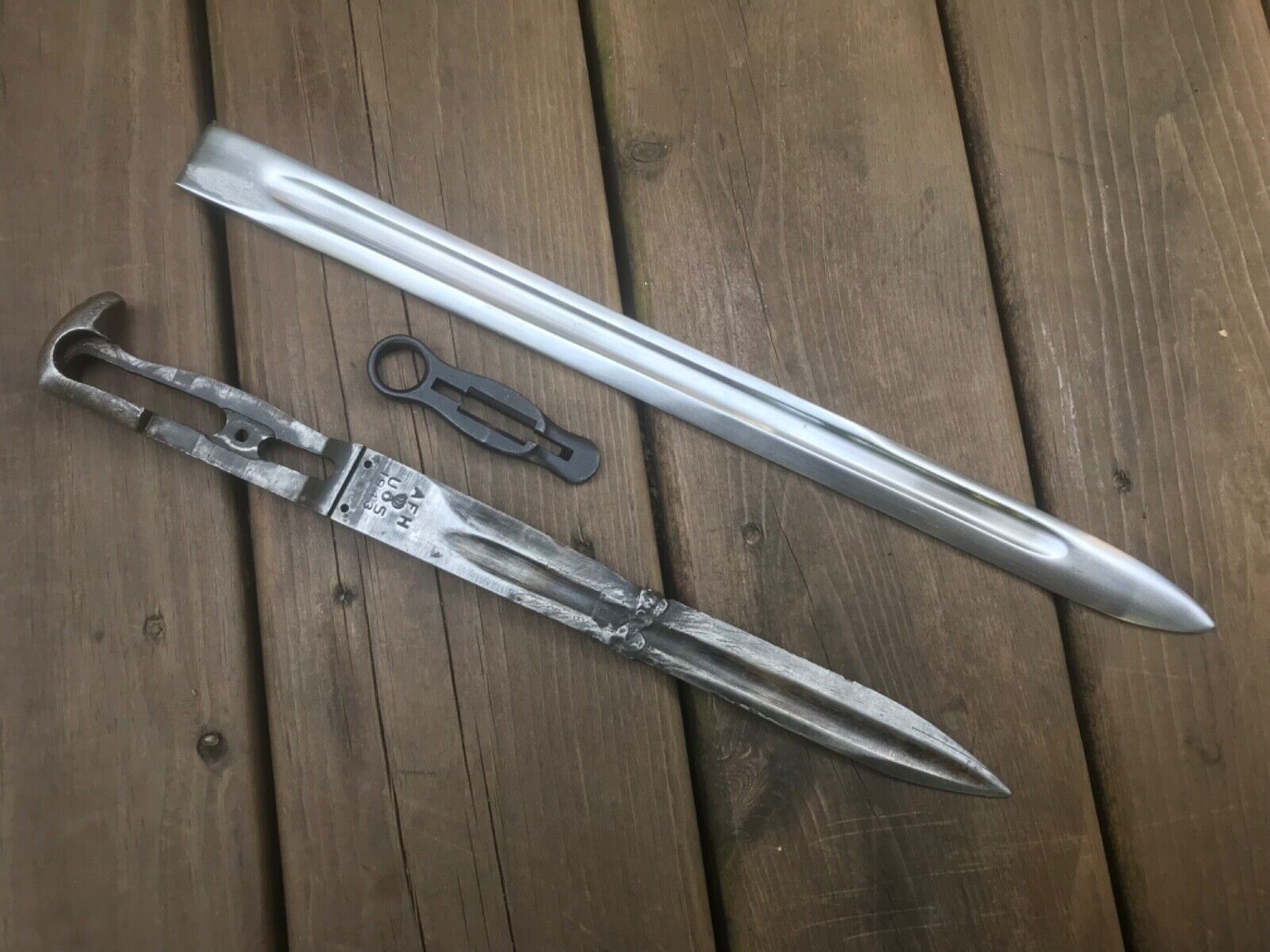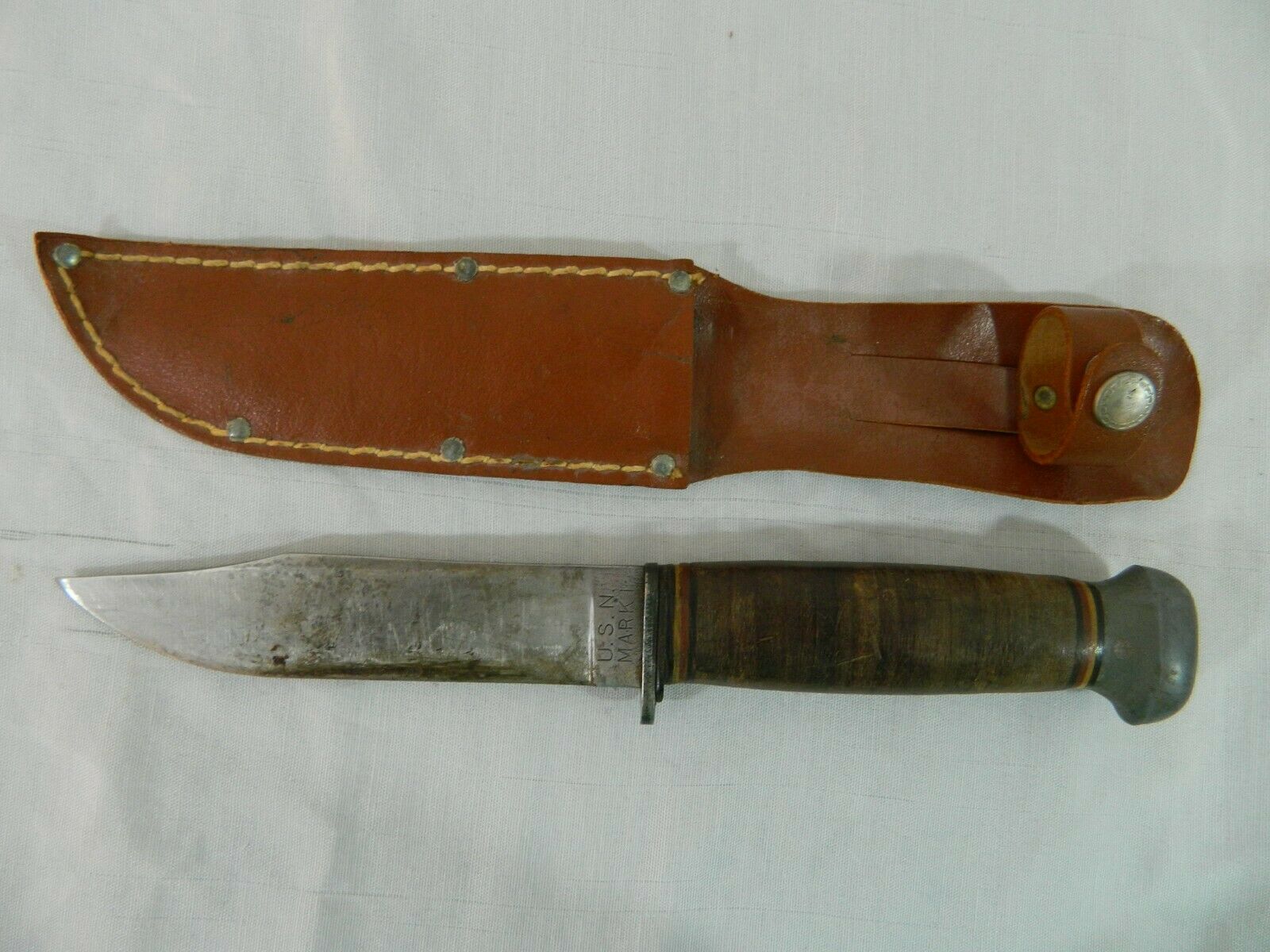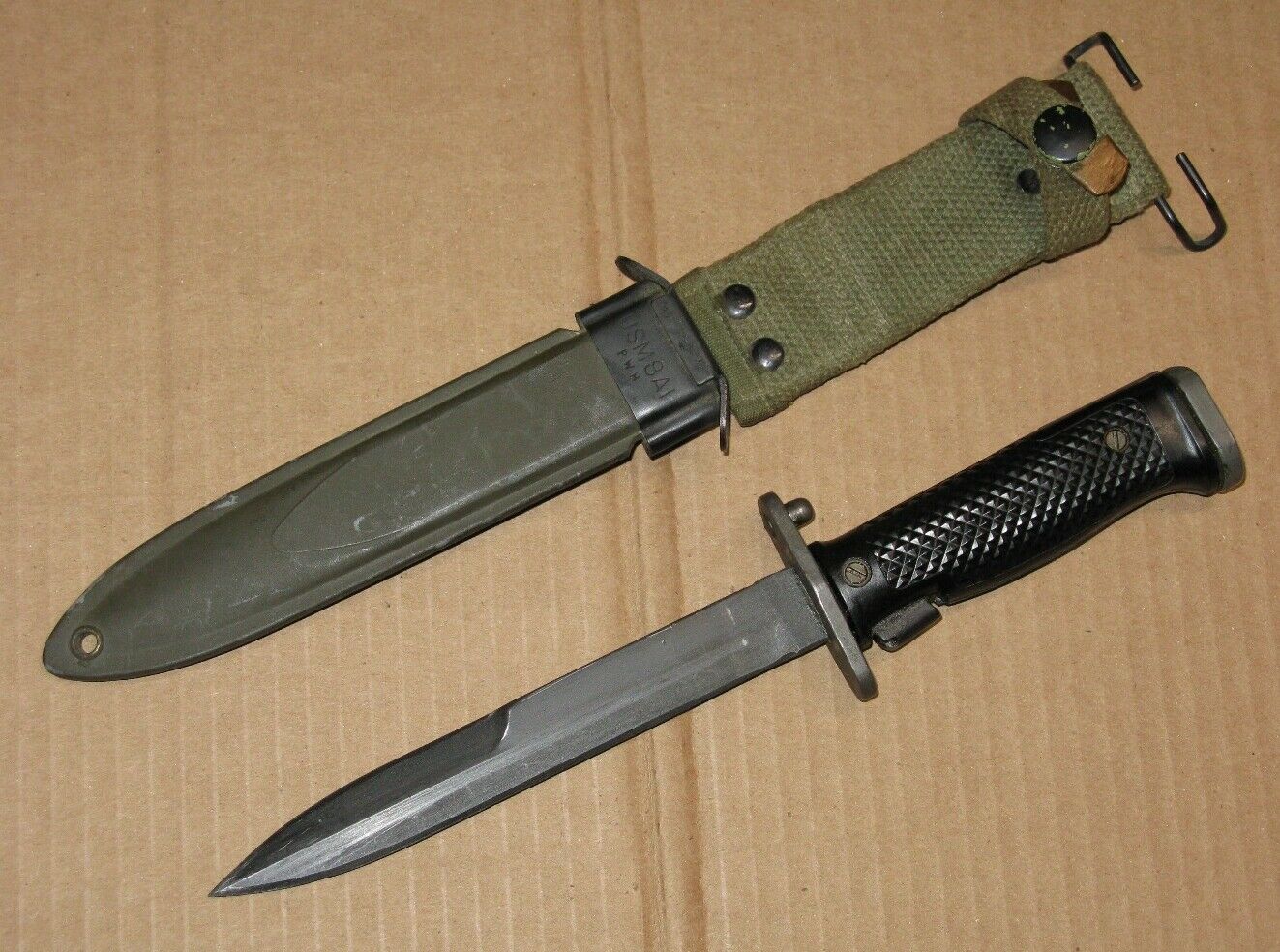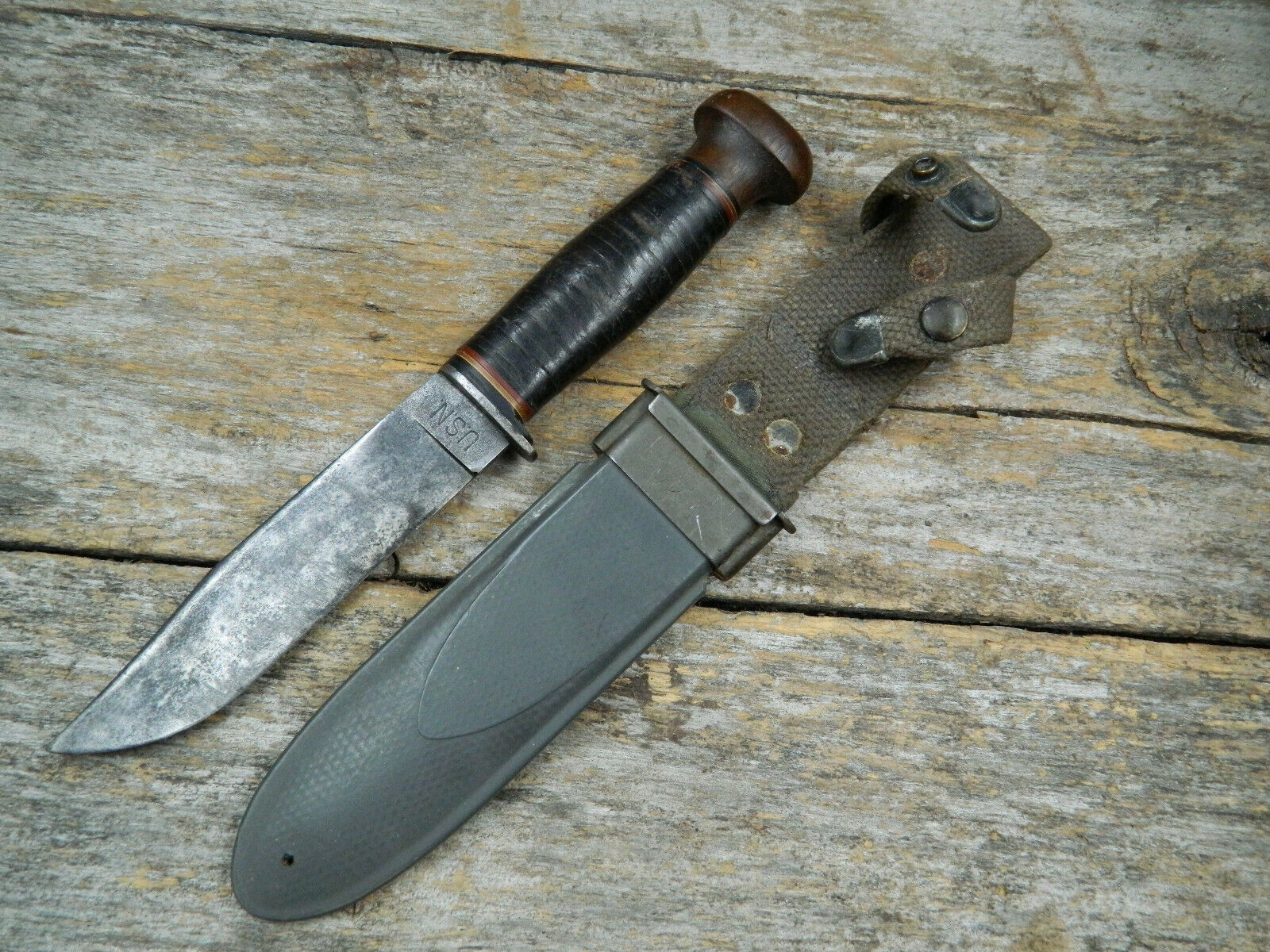-40%
Ww2 Knife and leather sccabard, Named and unit 61st field arty
$ 40.12
- Description
- Size Guide
Description
This is a WW2 knife used by Harvey Robert’s, he was in the 61st Field Artillery Battalion. The 4.5 inch blade is hall marked with a Maltese cross and a broad arrow, also stamped made in Butcher Sheffield, England. There is gimping along the back of the blade. The handle is made of leather, brass, and red spacers. It has an aluminum pommel and guard. There is a blood groove on the blade.The leather sheath has the mans name stamped on it. “H D Robert’s” and his unit “61 Batt”
It is sewn and riveted, and is stamped PAL, the hallmark of fine cutlery.
A great knife with researched history.
Some history of the 61st field arty.
After the bombing of Pearl Harbor and the entrance of the United States into World War II, the Battalion and the rest of the 1st Cavalry Division trained in earnest for upcoming combat in the deserts of west Texas. In 1943 the Battalion turned in its horses and deployed with the rest of the Division to begin more intense training for combat in the Pacific in Australia. The 61st Field Artillery Battalion arrived in Brisbane, Australia on 25 July 1943 and immediately began intensive training for combat. The M8 Howitzers were replaced with the 105mm Howitzer, M-2A1, and the TD-9 tractor became the prime mover. The Battalion with all personnel and equipment embarked on Christmas Day 1943 on a Liberty Ship bound for New Guinea and arrived at Camp Sudest on 11 January 1944. On 6 March, the Battalion left New Guinea and made an unopposed landing on Los Negros Island, part of the Admiralty group of islands.
During April 1944, the 61st Field Artillery Battalion supported the 8th Cavalry Regiment during operations in the Malopunyo sector. The ensuing days found the Battalion in direct support of the 7th and 8th Cavalry Regiments, during many attacks on Japanese positions. The 61st Field Artillery Battalion was very effective being both rapid and accurate with its artillery fires. In September 1944, the Battalion was alerted for the Philippine operations and on 8 October it was combat loaded on an LST and would make an opposed landing on the Island of Leyte. With Leyte secure, the Battalion was again combat loaded, and in January 1945, made a landing on Luzon.
“B” Battery, 61st Field Artillery Battalion was with General Chase and the 2nd Battalion, 8th Cavalry when the “Flying Column” made the dash to liberate Manila and free the internees at Santo Tomas University. The Battalion had many fire missions during the fight to free Luzon. In one position near Cainta, the Battalion was subjected to almost nightly Japanese artillery fire. On 12 March 1945, the 61st Field Artillery Battalion was relieved and went into camp near Alabang where a program of rest and equipment rehabilitation was carried out.
During late March and early April 1945, the fighting continued with the 61st Field Artillery Battalion seeing some of the most intense firing and lucrative targets of the campaign. May and June found a new role for the Artillerymen as they were given the mission of patrolling and mopping up which in effect made them combat Infantrymen. With the Luzon campaign over on 1 July 1945, the 61st Field Artillery Battalion began preparing for an assault landing on the Japanese mainland. Then in quick succession came the dropping of the atomic bombs on Hiroshima and Nagasaki, which resulted in the unconditional surrender of the Japanese.










